Space in Between –
Living in Gallery with Wayan Suja
Dozens of rectangular drawings, both canvas and paper in various sizes, fill the walls of Komaneka Gallery as part of the Living in Gallery program this March 2022. The program which has been running for 8 times since last December is a short residency that presents an offer (a challenge) to the invited artists to process, create, and develop their own ideas in the Komaneka gallery space within a certain period of time. In this 9th session, Komaneka Gallery is filled by I Wayan Suja, who is known for his paintings that leans towards realistic tendencies and often raise issues of self identity and socio-culture as the main themes of his works.
Responding to the offer of this program, Wayan Suja packaged his ideas into the concept of “Ruang Antara” or “Space in Between”. The theme and concept itself departs from the name of the artist’s own studio in Batubulan, ‘Ruang Antara Studio’. Thus, what he wants to show in this residency does not stop at presenting the ‘creative process’ of the ‘finished work’ as is the case with studio work in general, where the artist has the upper hand in producing their artworks. Wayan Suja felt the need to bring something different and meaningful to this residency program, and that for him was interaction. Furthermore, interaction activities are then interpreted by him as a creative-collaborative work mechanism where everyone (actors) are involved as an important part of realizing the work.
This is not the first time Suja has undertaken collective and collaborative work as an extension of his artistic and conceptual practice. If we pull back a little, around 2002 Suja was active in the Taxu Art Clinic group and became an organizer in various research programs and exhibitions with his group of friends, then in 2015 Suja was also active in the movement of environmentally-concious art, until the latest in 2020 Suja together with 3 artists from Bandung, Yogyakarta and China collaborated virtually on an installation that was exhibited at the Griya Santrian Gallery. Suja is accustomed to working socially, collectively, and collaboratively with various people so that it is easier for Suja; apart from the process as an instrument to find and recognize oneself deeply, art is also a social event that allows interaction and knowledge exchange to occur. That’s how Suja put his practice this time in the Living in Gallery program at Komaneka Gallery.
So what kind of collaboration took place in Komaneka’s gallery space?
Suja spends his time at Komaneka Gallery for approximately 6 hours x 6 days. From the first day at Komaneka, Suja took his two children Kadek Caesar (12 years) and Komang Dimas (6 years) as collaborators and drew with them. It turns out that Suja’s idea of ‘Space in Between’ is also dedicated to his two children who loves to draw, whom Suja has always wanted to collaborate with but haven’t found the right moment. It was only in this program that Suja felt that he could fulfill his long-held desire. In front of blank canvases, Suja and his children started their interaction by dividing tasks, taking out their drawing tools, selecting their canvases, then together began to draw spontaneously while responding to each other’s drawings. Suja started by making abstract patterns from splattered and melted paint and stencils from scraps of cloth and newsprint, while Kadek and Komang initially made more sketches and outlines using markers or small brushes, slowly after getting used to large areas then they both took a brush with a larger size, roller, to spray paint and other drawing tools.
The results of their collaboration include the “Virtual Iconography” series, “Mythology of the Future #1 & #3”, “Everyone is a Hero”, “Nature Guardian #2”, and the “Small Narrative” series. Through these works, it is clear that Wayan Suja is no longer cult realist painter in the Indonesian art scene, nor are they artworks by children who are often intervened by adults, especially their parents. What they see in their work is a result of the relationship between father and son, between Suja’s academic consciousness and the realm of the imagination of his children. Therefore, Suja’s biggest challenge—besides being patient waiting for her child to play games and watching YouTube when they’re tired of drawing—is to refrain from dominating his children’s drawings, so Suja’s choice is to maintain the original lines and shapes produced by Kadek. and Komang as much as possible. Similar choices were also made for other forms of interaction with other gallery visitors, most of whom were Suja’s family and close friends.
Wayan Suja’s practice with his two children, his artist friends, and other gallery visitors indirectly made this Living in Gallery feel different from their previous sessions. This is in accordance with Suja’s wishes to present other possibilities in his work within Komaneka’s environment. Even though the final result is not the main product of his time, Suja is more interested in focusing the process this time and on the forms and interactions that occur both formally and informally that is materialised in his works.
This is where Suja’s efforts are read as a simple example of the practice of relational aesthetics. Where the concept of aesthetics is no longer only seen in formal qualities, namely lines, fields, colors; whether the work is good or not. Furthermore, this concept is challenged to be relevant to the activities and social context of the artist as well. So that Suja’s position is no longer a full-fledged artist or the sole important actor in his works this time. Suja is also an “organizer” in the artistic arrangements he planned out. I also agree with the statement of a tweet that I had read, that the more complex the relationships in the process of creating a work, the more aesthetically pleasing the work will be.
Batubulan, March 2022
Vincent Chandra
-

Space of Possibility (2022)
by Wayan SujaAcrylic, Posca on Canvas, 120 × 150 cm -
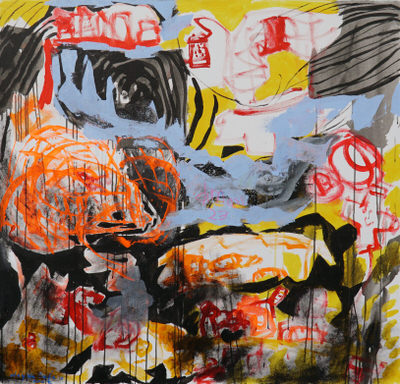
Mythology of the Future #3 (2022)
by Wayan SujaAcrylic, Posca on Canvas, 120 × 100 cm -
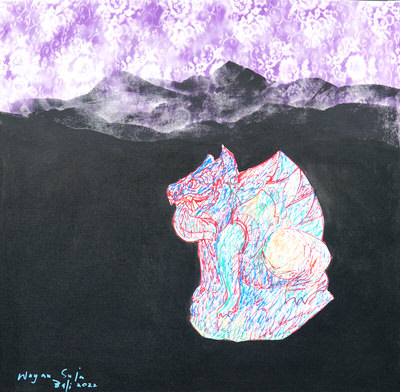
Artifacts in the Gallery’s Corner #4 (2022)
by Wayan SujaAcrylic Charcoal on Canvas, 100 × 100 cm -
 S o l d
S o l d The Nature Guardian #1 (2022)
by Wayan SujaAcrylic Charcoal on Canvas, 120 × 100 cm -
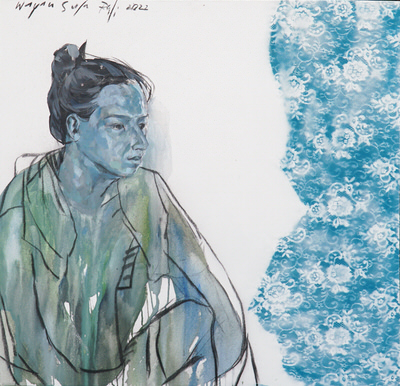 S o l d
S o l d “NYOMAN” The Young Art Writer (2022)
by Wayan SujaAcrylic Charcoal on Canvas, 100 × 100 cm -
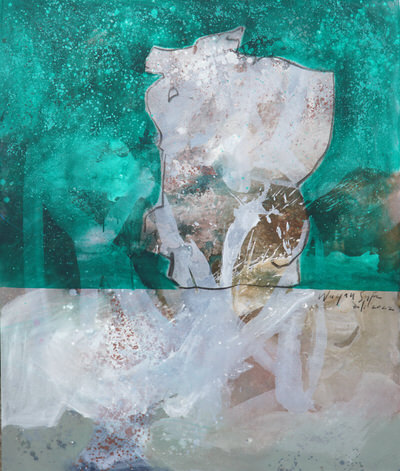
Artifacts in the gallery’s corner #1 (2022)
by Wayan SujaAcrylic Charcoal on Canvas, 135 × 110 cm -

“MADE” The Art Writer (2022)
by Wayan SujaAcrylic Charcoal on Canvas, 120 × 120 cm -
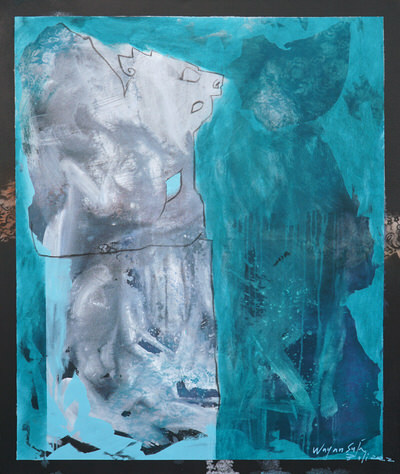
Artifacts in the Gallery’s Corner #2 (2022)
by Wayan SujaAcrylic Charcoal on Canvas, 135 × 110 cm -
 S o l d
S o l d Traces of Civilization #1 (2022)
by Wayan SujaAcrylic Charcoal on Canvas, 150 × 150 cm -

Mythology of the Future #2 (2022)
by Wayan SujaAcrylic, Posca on Canvas, 150 × 150 cm -

Virtual Iconography #1:Arcebeta (2022)
by Wayan SujaAcrylic on canvas, 45 × 35 cm -

Virtual Iconography #3:Firevolution (2022)
by Wayan SujaAcrylic, Posca on Canvas, 45 × 35 cm -

Virtual Iconography #2:Deoxtentacel (2022)
by Wayan SujaAcrylic, Posca on Canvas, 45 × 35 cm -

Traces of Civilization #2 (2022)
by Wayan SujaAcrylic Charcoal on Canvas, 150 × 150 cm -

Traces of Civilization #3 (2022)
by Wayan SujaAcrylic Charcoal on Canvas, 150 × 150 cm -
 S o l d
S o l d Silent Day (2022)
by Wayan SujaAcrylic on canvas, 150 × 120 cm -

Virtual Iconography #6 (2022)
by Wayan SujaAcrylic, Posca on Canvas, 45 × 35 cm -

Informal Balance (2022)
by Wayan SujaAcrylic on canvas, 45 × 35 cm -
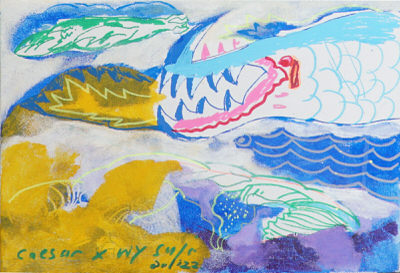 S o l d
S o l d Small Narrative #2 (2022)
by Wayan SujaAcrylic, Posca on Canvas, 25 × 35 cm -
 S o l d
S o l d Small Narrative #1 (2022)
by Wayan SujaAcrylic, Posca on Canvas, 25 × 35 cm -

Narasi Dunia Kecil (2022)
by Wayan SujaAcrylic Charcoal on Canvas, 120 × 150 cm -
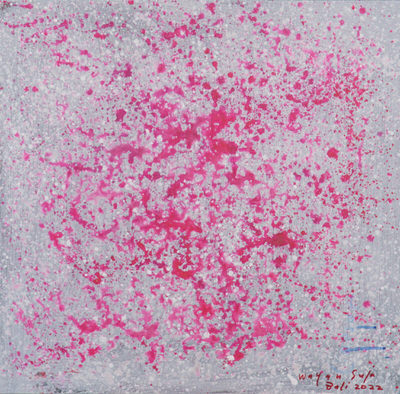
Intuitive Space (2022)
by Wayan SujaAcrylic, Posca on Canvas, 45 × 45 cm -

Virtual Iconography #7 (2022)
by Wayan SujaAcrylic, Posca on Canvas, 45 × 45 cm -

The Nature Guardian #2 (2022)
by Wayan SujaAcrylic Charcoal on Canvas, 150 × 150 cm -
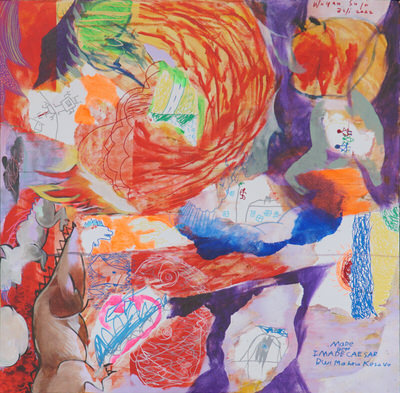
Mythology of the Future #1: Akidsimajination (2022)
by Wayan SujaAcrylic, Posca on Canvas, 100 × 100 cm -

In Between #2 (2022)
by Wayan SujaAcrylic, Posca on Canvas, 35 × 55 cm -
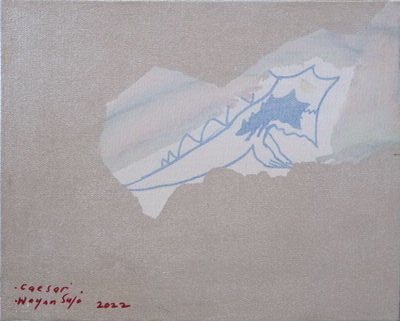
Virtual Iconography #5:waterevolution (2022)
by Wayan SujaAcrylic, Posca on Canvas, 35 × 45 cm -
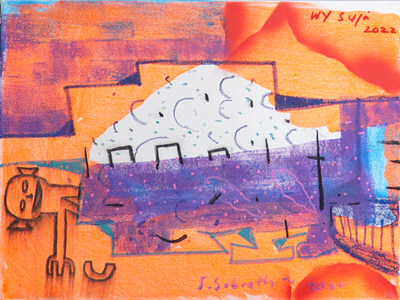
In Between #1 (2022)
by Wayan SujaAcrylic, Charcoal, on Canvas, 35 × 45 cm -
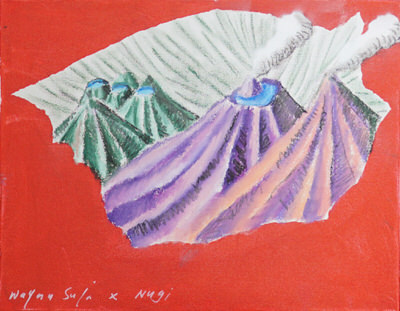
Gunung Berapi (2022)
by Wayan SujaAcrylic, Charcoal, on Canvas, 35 × 45 cm -

Virtual Iconography #4:Eartevolution (2022)
by Wayan SujaAcrylic, Charcoal, on Canvas, 35 × 45 cm -
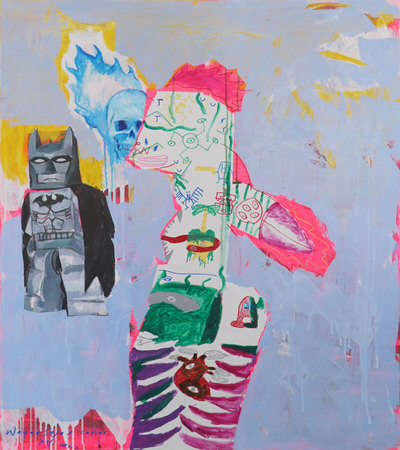 S o l d
S o l d Everyone is A Hero (2022)
by Wayan SujaAcrylic, Charcoal, on Canvas, 120 × 100 cm -
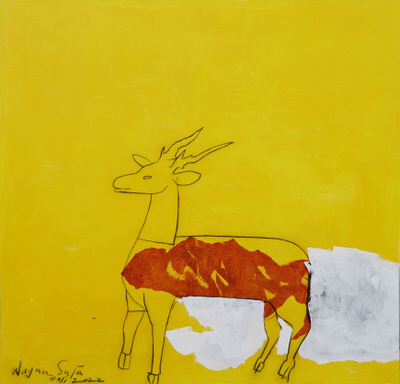
Artifacts in the Gallery’s Corner #3 (2022)
by Wayan SujaAcrylic, Charcoal, on Canvas, 120 × 120 cm


Leave a Reply